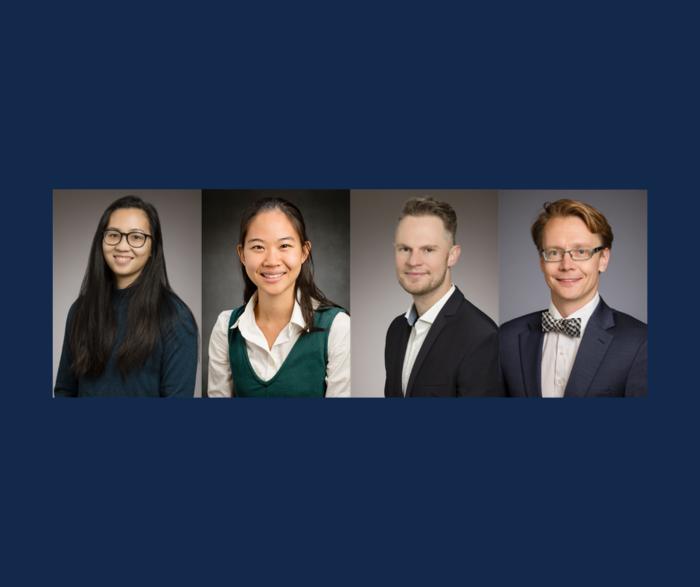University of Illinois Urbana-Champaign professors Angela Kou (Physics), Pinshane Huang (MatSE), Wolfgang Pfaff (Physics) and Andre Schleife (MatSE) have received an Air Force Office of Scientific Research grant for their project “Identifying the origin and lossy defects in Josephson junctions”. The two-year, nearly $1 million grant aims to take a materials science approach to address the detrimental defects of Josephson junctions in superconducting qubits.

Credit: The Grainger College of Engineering at University of Illinois Urbana-Champaign
University of Illinois Urbana-Champaign professors Angela Kou (Physics), Pinshane Huang (MatSE), Wolfgang Pfaff (Physics) and Andre Schleife (MatSE) have received an Air Force Office of Scientific Research grant for their project “Identifying the origin and lossy defects in Josephson junctions”. The two-year, nearly $1 million grant aims to take a materials science approach to address the detrimental defects of Josephson junctions in superconducting qubits.
The current state of quantum computing is called the noisy intermediate-scale quantum device era where the number of qubits, or quantum processing units, and junctions per chip is increasing but is not yet well controlled enough to build a quantum computer. One of the leading problems in the field of quantum information research is trying to figure out how to build good qubits and good hardware for quantum information.
A leading platform in the field is that of superconducting qubits. Researchers use superconducting materials where the circuits are based on aluminum/aluminum oxide/aluminum junctions and these junctions need to be controlled at a very high level so that their behavior can be predicted when incorporated into quantum hardware. The junctions are made via a metal evaporation process but the microscopics of the junction are not well-controlled. This allows for a lot of disorder in the material and makes it difficult to predict the behavior of the material.
“This grant is looking at how to control these aluminum oxide junctions and to understand the materials science behind the junctions a bit more, and then ultimately see if we can make better junctions,” says project lead Kou.
To study the defects and losses in the junctions, the team plans on two main approaches. The first is structural characterization, using transmission electron microscopy (TEM) to look at both the morphology and structure of the structure and do elemental analysis to determine what the oxide is actually made of (aluminum and oxygen concentrations) and how disordered it is. The second is characterization of the devices at low temperatures to determine the density of defects in the junction.
The data from these approaches will produce a large enough data set to generate statistics. Kou says “it’s possible that we can make something better with one device, but it’s not something generalizable. I’m really excited to be able to create a full picture of a Josephson junction. If we could have a recipe for figuring out how to reduce the number of detrimental defects that couple to our devices, that would help push the field forward.”
Kou highlights the collaboration between the materials science and engineering department and the physics department, “it is special that it’s easy for us to find a TEM expert or dynamic modeling expert just down the hall and makes a grant like this possible.”




